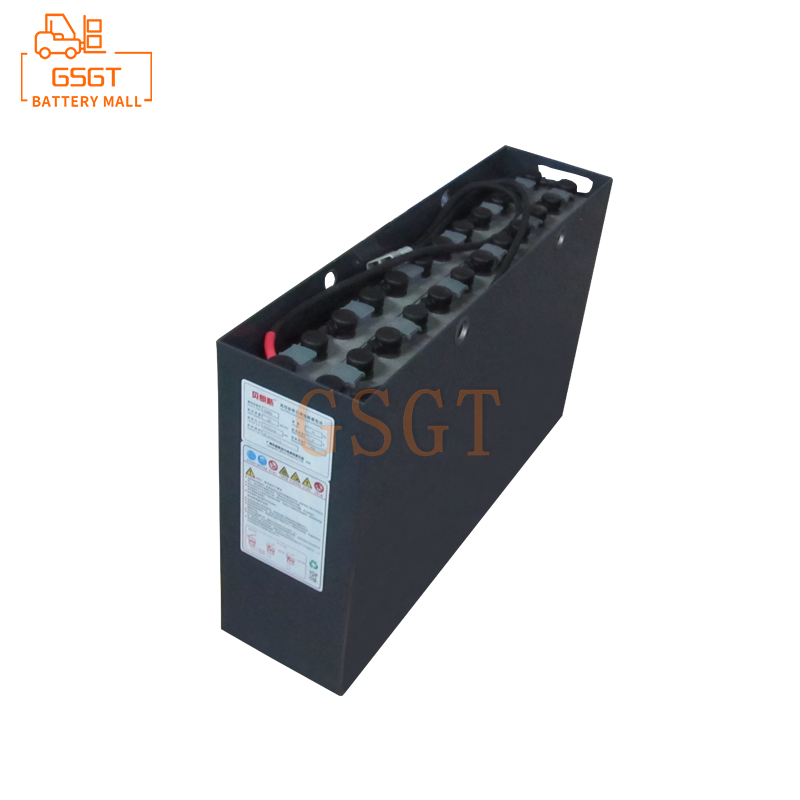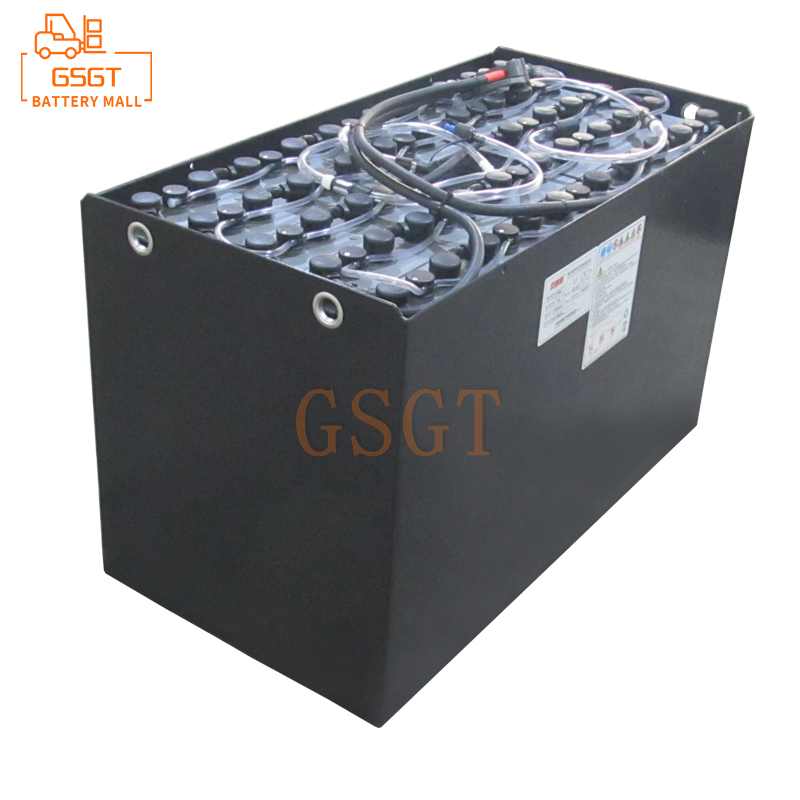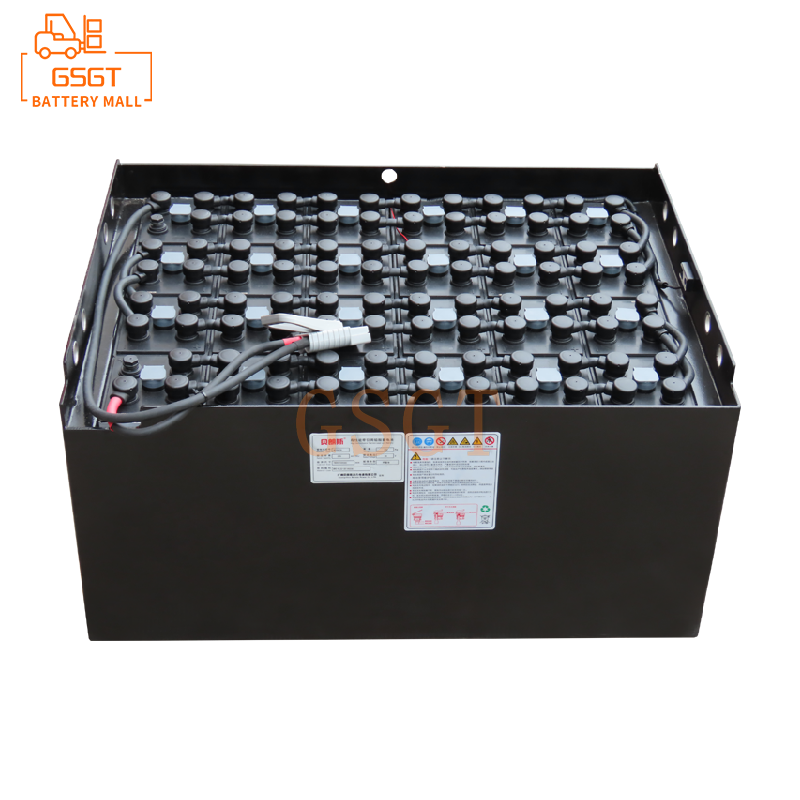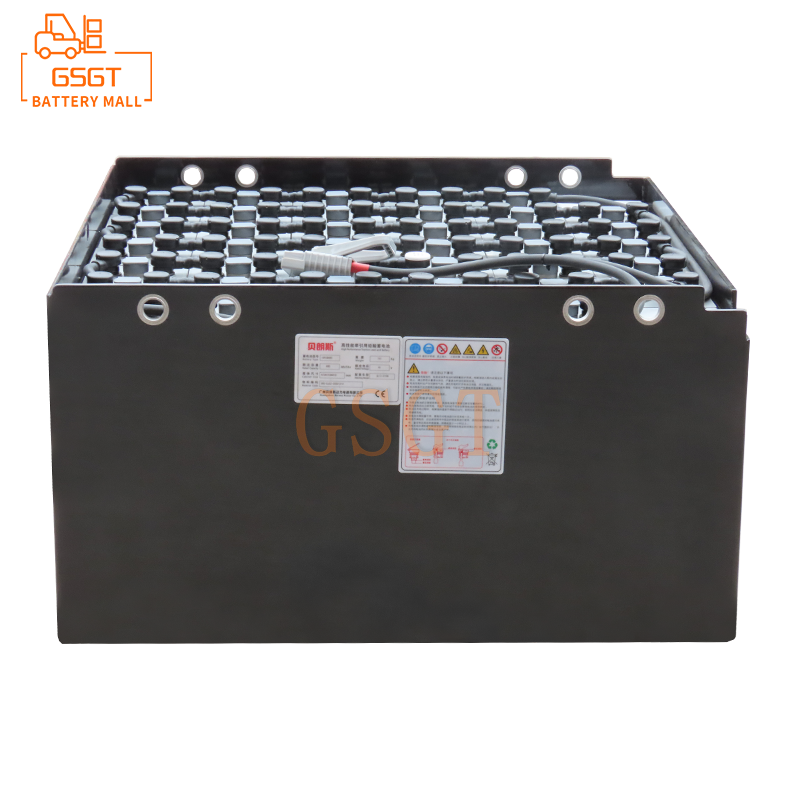Time:2025-06-17 10:20:21
Browse:685
In modern logistics and industrial production, forklifts, as key material handling equipment, their efficient operation is of vital importance to the entire operation process. As the main power source of electric forklifts, the matching degree of lead-acid batteries with forklifts directly affects the performance, endurance, service life and operating costs of forklifts. Due to the differences in operation requirements and work intensity, forklifts of different tonnages have different demands for lead-acid batteries. Proper matching of lead-acid batteries can ensure the stable and efficient operation of forklifts under various working conditions, reduce maintenance costs, and enhance the economic benefits of enterprises. This article will delve into how forklifts of different tonnages can precisely match lead-acid batteries, providing valuable references for relevant practitioners.
The classification and working characteristics of forklifts
Small-tonnage forklifts (1-3 tons)
Small-tonnage forklifts are usually characterized by their compactness and flexibility, making them suitable for handling goods in narrow Spaces, such as in small warehouses and supermarkets where goods are placed and removed from shelves. The traveling speed of this type of forklift is relatively slow, and its lifting height is generally between 3 and 6 meters. Due to its complex working environment, it has high requirements for the maneuverability and steering flexibility of forklifts. Meanwhile, because of frequent starts and stops as well as short-distance travel, there are certain requirements for the battery's instantaneous discharge capacity and cycle life.
Medium-tonnage forklifts (3-8 tons)
Medium-tonnage forklifts have a wider range of applications and are commonly found in general logistics warehouses, factory workshops and other places. They can handle heavy goods and can be lifted to a height of 6 to 10 meters or even higher. Compared with small-tonnage forklifts, medium-tonnage forklifts have both increased traveling speed and lifting speed, and their working intensity is also greater, requiring long-term continuous operation. Therefore, higher requirements are placed on the battery's capacity and endurance to meet the need for stable operation over a longer period of time.
Large-tonnage forklifts (over 8 tons)
Large-tonnage forklifts are mainly used in heavy cargo handling scenarios such as large ports, docks, and steel mills. It has a strong load-bearing capacity and can handle several tons or even dozens of tons of goods, with a relatively high lifting height. This type of forklift usually operates in outdoor environments, with long travel distances and harsh working conditions. Large-tonnage forklifts have extremely high requirements for power performance. They need batteries with strong continuous discharge capacity and high capacity to cope with heavy loads, long-distance driving and frequent lifting operations.
Key parameters and performance indicators of lead-acid batteries
Voltage
The voltage of lead-acid batteries is an important parameter. Common ones include 24V, 36V, 48V, 72V, etc. The design of forklift motors is usually adapted to specific voltage levels. If the battery voltage does not match the forklift motor, it will lead to a decline in motor performance, such as insufficient power, unstable speed, and even motor burnout. Therefore, when choosing lead-acid batteries, it is essential to ensure that their voltage is exactly the same as the rated voltage of the forklift.
Capacity
Battery capacity indicates the amount of electric charge that a battery can store, with the unit being ampere-hours. The larger the capacity, the more electrical energy the battery can provide, and the stronger the forklift's endurance will be. Forklifts of different tonnages have varying demands for battery capacity due to differences in work intensity and operation time.
Discharge depth
The depth of discharge refers to the percentage of the amount of electricity discharged by a battery during its use to its rated capacity. The service life of lead-acid batteries is closely related to the depth of discharge. Generally speaking, the deeper the discharge depth, the shorter the cycle life of the battery. Therefore, when choosing lead-acid batteries for forklifts, it is necessary to consider the actual working conditions of the forklifts and reasonably control the depth of discharge to extend the service life of the batteries.
Cycle life
Cycle life refers to the number of charge and discharge cycles a battery can achieve a specified capacity under certain charge and discharge conditions. The cycle life of high-quality lead-acid batteries is usually around 1,500 times. For frequently used forklifts, batteries with a long cycle life can reduce the frequency of battery replacement and lower maintenance costs. Therefore, when choosing batteries, products with a long cycle life should be given priority, especially for medium and large-tonnage forklifts, as their working intensity is high and the requirements for battery cycle life are even higher.
Specific strategies for matching lead-acid batteries with forklifts of different tonnages
Battery matching for small-tonnage forklifts
For small-tonnage forklifts of 1 to 3 tons, due to their operational characteristics of short distances, frequent starts and stops, and light loads, when choosing lead-acid batteries, the key considerations should be the battery's instantaneous discharge capacity and cycle life.
1. ** Voltage Selection ** : The common voltages for small-tonnage forklifts are 24V or 36V. The battery with the corresponding voltage should be selected based on the design requirements of the forklift.
2. ** Capacity determination ** : Based on the actual operation time and load conditions, a battery capacity of 200-400Ah is generally more appropriate. If the forklift operates for a short time each day and has a light load, a capacity of 200-300Ah might be sufficient. If the working hours are long or it is occasionally necessary to move slightly heavier goods, a battery of 300-400Ah can be chosen.
3. ** Depth of Discharge and Cycle Life ** : To extend the battery life, try to keep the depth of discharge at around 50% to 60%. Select batteries with a cycle life of 1,500 times to reduce the frequency of battery replacement and lower operating costs.
Battery matching for medium-tonnage forklifts
Medium-tonnage forklifts with a capacity of 3 to 8 tons have a relatively high working intensity and need to operate continuously for long periods of time. Therefore, they have high requirements for battery capacity and endurance.
1. ** Voltage Adaptation ** : The commonly used voltages for medium-tonnage forklifts are 48V or 72V. The matching voltage should be strictly selected in accordance with the technical parameters of the forklift.
2. ** Capacity Calculation ** : Calculate the required battery capacity based on the working hours and load weight of the forklift. Under normal circumstances, medium-tonnage forklifts require a battery capacity of 400 to 800Ah. If the forklift works for more than 8 hours a day and frequently handles heavy goods, it is recommended to choose a large-capacity battery of 600-800Ah. If the working time is short or the load is relatively light, a battery of 400-600Ah can be selected.
3. ** Pay attention to discharge characteristics ** : During the operation of medium-tonnage forklifts, the battery needs to discharge continuously and stably. Therefore, lead-acid batteries with smooth discharge curves and high discharge efficiency should be selected to ensure that the forklift can maintain good performance throughout the entire working process. At the same time, it is necessary to control the depth of discharge at around 40% to 50% to extend the service life of the battery.
Battery matching for large-tonnage forklifts
Forklifts with a capacity of over 8 tons are mainly used for handling heavy goods. They work in harsh environments and have extremely high requirements for battery performance.
1. ** High Voltage Selection ** : Large-tonnage forklifts typically use voltages of 72V, 80V or even higher to meet their powerful power demands. When choosing a battery, it is essential to ensure that the battery voltage is fully compatible with the electrical system of the forklift to guarantee its normal operation.
2. ** Extra-large Capacity Configuration ** : Due to the extremely high working intensity of large-tonnage forklifts, they need to be equipped with extra-large capacity batteries of over 800Ah.
3. ** Long Life and High reliability ** : The battery replacement cost for large-tonnage forklifts is high and it affects operational efficiency. Therefore, lead-acid batteries with long cycle life and high reliability should be selected. This type of battery usually adopts high-quality plate materials and advanced manufacturing processes, which can operate stably in harsh working environments and reduce the probability of faults. At the same time, attention should be paid to the maintenance and care of the battery. Regularly check the electrolyte level and density to ensure that the battery is in good working condition.
Other matching considerations
Battery size and installation space
The external dimensions of lead-acid batteries must be perfectly matched with the battery compartment of the forklift. If the battery size is too large, it cannot be installed in the battery compartment. If the size is too small, it may cause the battery to shake during driving, affecting the battery life and the safety of the forklift. When choosing batteries, the size of the forklift battery compartment should be precisely measured, and the product size specifications provided by the battery supplier should be referred to to ensure that the batteries can be installed smoothly and firmly fixed.
Matching of the charger
The matching of the charger with the lead-acid battery is also very important. The charging voltage and current of the charger must match the parameters of the battery; otherwise, it will lead to insufficient or overcharging of the battery, affecting its lifespan. Generally speaking, the charging current of a charger should be 0.1 to 0.2 times the battery capacity.
Working environment factors
The working environment of forklifts also has a significant impact on the performance and lifespan of batteries. If forklifts operate in high-temperature environments, the evaporation rate of the battery's electrolyte will accelerate, and the internal resistance of the battery will also increase, thereby affecting the battery's performance and lifespan. At this point, batteries with high-temperature resistance should be selected, and ventilation and heat dissipation measures in the battery compartment should be strengthened. If the forklift operates in a low-temperature environment, the battery capacity will decline and the starting performance will also deteriorate. In this case, batteries with better low-temperature performance can be selected, and appropriate heating measures can be taken, such as installing battery heating devices, to enhance the battery's working performance.
Conclusion
Forklifts of different tonnages have significant differences in operation characteristics, work intensity and power requirements. Therefore, when matching lead-acid batteries, it is necessary to comprehensively consider various parameters of the forklift, the working environment and the key performance indicators of the battery. By rationally selecting parameters such as battery voltage, capacity, depth of discharge and cycle life, and ensuring a perfect match between the battery and the forklift, the performance of the forklift can be effectively enhanced, the battery's service life can be prolonged, and operating costs can be reduced. At the same time, attention should also be paid to the impact of battery size and installation space, charger matching, and working environment factors on battery performance. In practical applications, successful case experiences can be referred to, combined with the usage of one's own forklifts, to make scientific and reasonable choices, providing reliable power support for the material handling operations of enterprises and enhancing the overall operational efficiency and competitiveness of the enterprises.

$1060

$3050

$5710

$5710

MESSAGE
Professional And Efficient
Security
Affordable Price
Professional Services